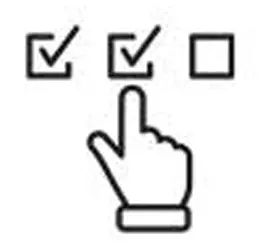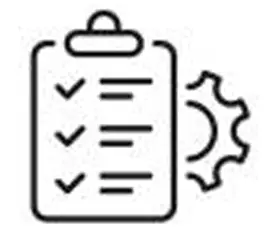유머 분류
10 Things That Your Family Taught You About Titration ADHD Medications
작성자 정보
- John Schnaars 작성
- 작성일
본문
ADHD Medication Titration
Adderall, Dexedrine and other stimulant medications for ADHD have a long-lasting effect that can last up to fourteen hours. They have a greater effect than stimulants with shorter durations, such as methylphenidate.
Titrating a medication is the method doctors use to determine the right amount for Titration Adhd each individual patient. This article will cover process of titration, the side effects and when you've reached your "target dosage". Keep a note of your next appointment with your doctor!
Dosage
Titration is the process of determining the medication dose that reduces ADHD symptoms to the maximum degree while minimizing side effects. The doctor will start with a low dose and increase it gradually over time. It is typically done every one to three weeks. The doctor may also test different kinds of medications to find out which one is best for your child.
The titration process could be a long time however it is crucial to keep it up. It is not uncommon for children to have to test two or even three types of ADHD drugs before settling on the best one that is a good match. The goal is to get your child's symptoms under control and eliminate their negative effects on his or her life.
Stimulants are the most popular treatment for ADHD. Some examples are methylphenidate (Ritalin) and amphetamine salts (Adderall). These medications are available in different forms, such as chewables, capsules and tablets and liquid. The dosage can vary but the most common is 10 milligrams per day. This dose is sufficient for some patients to reduce their symptoms. Some patients will need more medication.
It is crucial to take into consideration the release profiles of the medication that is being used. Certain stimulants have a fast-acting effect and are able to wear off quickly, while others take a longer time to show an effect. Some people are not able to metabolize and therefore may not benefit from higher doses, but still show improvement at lower doses. The titration process should also consider whether the patient is taking any medications that block CYP2D6 such as SSRIs. This will impact the effectiveness of the medication for them.
Before each dose increase, it's important to get parent/teacher ratings and symptom reports. It is important to use a scale for rating that is validated for ADHD like the Follow Up Vanderbilt form or Adult ADHD Symptoms questionnaire. This will ensure that the data is collected accurately and that the medication is being adjusted appropriately.
Certain children are prone to certain negative effects of ADHD medicines, such as an increase in irritability or appetite. This can mean that the medicine is not working well for them and needs to be adjusted. Other side effects, such as feeling depressed or sluggish could be an indication that you are taking too many medications. It is recommended to reduce the dosage to treat this.
Side effects
It could take weeks or months to reach the optimal dosage of medication for ADHD. During this period patients must keep a daily log of their symptoms and side effects. It is recommended that this information be recorded on a calendar or an account book to be easily shared with the doctor.
Stimulants are the most frequently prescribed medications for ADHD. They can trigger many adverse effects. These can include headaches as well as dry mouth, stomachaches nausea, insomnia and a sudden rise in blood pressure or heart rate. Patients may also experience tics which are small repetitive body movements that can include grimacing, blinking, or repeated facial expressions. While these side effects are not usually severe but they should be notifying the doctor as soon as they occur.
Some stimulant side effects, like insomnia or irritability are more apparent when you first start taking the medication. However, they tend to improve with time. Different people process certain medications differently. It is crucial to determine if a patient has a slow or fast metabolism, so that the right dosage can be given.
Although it isn't common however, it is possible that the initial medication won't work for a child who has ADHD. If this is the case the doctor will then switch to a different medication. It is not unusual for doctors to switch their medications. Parents and children should be supportive of this process and know the importance of being able to select the correct medication.
It is also important to remember that even though the titration process may appear slow, it is important for a child's long-term health. Changing ADHD medication too quickly can cause negative side effects and a ineffectiveness.
Titration is not only for stimulants for ADHD but also for other medications, such as antidepressants or antibiotics. Although it is typically used in conjunction with stimulants titration adhd can help determine the most effective dose of any medication that is taken long-term.
Schedule
Titration is a method titration to find the right dosage of medication a person needs. The dosage is determined by various factors like height, weight and symptoms. It is important to remember that there are variations in drug release profiles (ie the way that a stimulant like Methylphenidate is absorbed and/or impacts the body). Your doctor will test all of these aspects when adjusting your dosage.
The majority of times, doctors will start with a very low dosage of the medication, and then gradually increase the dosage. This is so that the physician can create a "target dose" that is effective in controlling symptoms but has the fewest side effects possible. It is essential that children and parents participate in the titration procedure by taking a rating scale for each dose, then returning to clinic to review the effectiveness of the medication and any side effects.
It may take months or even weeks for a doctor to get a child's ADHD symptoms under control with the right medication. It is essential that parents know this and work with their physician to ensure they're not irritable. This is especially important for younger kids who are more active and have lots of stimulation in their daily life.
The schedule of titration varies between patients, but it usually involves increasing the dosage in small increments each time for 1 to 2 weeks. When the child is at a target dosage and is operating at their best with no side effects, the physician will reduce to a maintenance dosage.
You should also discuss with your titration doctor the best time to take the medication. It is recommended to take the medication in the morning to allow your child to concentrate at school. Some patients might find that taking the medication later in the day is beneficial as it allows them to focus on their work or driving. It is also important to adhere to a regular schedule to take the medication. This will allow you to avoid forgetting doses or missing them.
Monitoring
The goal is to find the perfect dosage of medication that will help control ADHD symptoms with minimal side negative effects. It could take 3-4 weeks or more of a careful adjustment to achieve this balance. It is essential that the doctor and patient closely monitor the efficiency and side effects. It is helpful for physicians to ask the patient rate each dose using the free Follow Up Vanderbilt form or Adult ADHD rating scales from Frida. This allows them to monitor the effectiveness of the medication in a more objective manner than relying solely on subjective ratings by teachers and parents.
Stimulants exhibit a wide range of inter-individual variability in the way they respond to a certain dose. Therefore, patients should be gradually titrated up to avoid overdosing. Certain people are not able to process drugs and will exhibit signs and symptoms even at very low doses (eg atomoxetine, which is found in 7%-10% population) (Belle et al. 2002; Hechtman, 2005). Patients taking SSRIs or any other medications that inhibit the CYP2D6 pathway are also advised to take gradual adjustment. This will stop patients from developing a tolerance to the drug (eg bupropion, atomoxetine and Titration adhd Clonidine).
Monitoring long-term maintenance of medication is an ongoing process. It should include a review of target symptoms, including the ability to complete homework and school related activities, as well as a review of the effect on the function of appetite and sleep, asking parents and teachers to provide a regular assessment of the impact on the child's behavior and performance and self-ratings by adults and adolescents. [CG]
The titration process can be very stressful for some patients and their families. Understanding the reasoning behind the medication and the expectations for effectiveness and tolerance will reduce frustration and disappointment within the family. Similarly, educating the family members about ADHD can reduce feelings of blame or shame for their child's problematic behavior. It is essential that everyone in the family understands that these issues might not be caused by a lack discipline or poor parenting, but rather medically brain-related issues.
Adderall, Dexedrine and other stimulant medications for ADHD have a long-lasting effect that can last up to fourteen hours. They have a greater effect than stimulants with shorter durations, such as methylphenidate.
Titrating a medication is the method doctors use to determine the right amount for Titration Adhd each individual patient. This article will cover process of titration, the side effects and when you've reached your "target dosage". Keep a note of your next appointment with your doctor!
Dosage
Titration is the process of determining the medication dose that reduces ADHD symptoms to the maximum degree while minimizing side effects. The doctor will start with a low dose and increase it gradually over time. It is typically done every one to three weeks. The doctor may also test different kinds of medications to find out which one is best for your child.
The titration process could be a long time however it is crucial to keep it up. It is not uncommon for children to have to test two or even three types of ADHD drugs before settling on the best one that is a good match. The goal is to get your child's symptoms under control and eliminate their negative effects on his or her life.
Stimulants are the most popular treatment for ADHD. Some examples are methylphenidate (Ritalin) and amphetamine salts (Adderall). These medications are available in different forms, such as chewables, capsules and tablets and liquid. The dosage can vary but the most common is 10 milligrams per day. This dose is sufficient for some patients to reduce their symptoms. Some patients will need more medication.
It is crucial to take into consideration the release profiles of the medication that is being used. Certain stimulants have a fast-acting effect and are able to wear off quickly, while others take a longer time to show an effect. Some people are not able to metabolize and therefore may not benefit from higher doses, but still show improvement at lower doses. The titration process should also consider whether the patient is taking any medications that block CYP2D6 such as SSRIs. This will impact the effectiveness of the medication for them.
Before each dose increase, it's important to get parent/teacher ratings and symptom reports. It is important to use a scale for rating that is validated for ADHD like the Follow Up Vanderbilt form or Adult ADHD Symptoms questionnaire. This will ensure that the data is collected accurately and that the medication is being adjusted appropriately.
Certain children are prone to certain negative effects of ADHD medicines, such as an increase in irritability or appetite. This can mean that the medicine is not working well for them and needs to be adjusted. Other side effects, such as feeling depressed or sluggish could be an indication that you are taking too many medications. It is recommended to reduce the dosage to treat this.
Side effects
It could take weeks or months to reach the optimal dosage of medication for ADHD. During this period patients must keep a daily log of their symptoms and side effects. It is recommended that this information be recorded on a calendar or an account book to be easily shared with the doctor.
Stimulants are the most frequently prescribed medications for ADHD. They can trigger many adverse effects. These can include headaches as well as dry mouth, stomachaches nausea, insomnia and a sudden rise in blood pressure or heart rate. Patients may also experience tics which are small repetitive body movements that can include grimacing, blinking, or repeated facial expressions. While these side effects are not usually severe but they should be notifying the doctor as soon as they occur.
Some stimulant side effects, like insomnia or irritability are more apparent when you first start taking the medication. However, they tend to improve with time. Different people process certain medications differently. It is crucial to determine if a patient has a slow or fast metabolism, so that the right dosage can be given.
Although it isn't common however, it is possible that the initial medication won't work for a child who has ADHD. If this is the case the doctor will then switch to a different medication. It is not unusual for doctors to switch their medications. Parents and children should be supportive of this process and know the importance of being able to select the correct medication.
It is also important to remember that even though the titration process may appear slow, it is important for a child's long-term health. Changing ADHD medication too quickly can cause negative side effects and a ineffectiveness.
Titration is not only for stimulants for ADHD but also for other medications, such as antidepressants or antibiotics. Although it is typically used in conjunction with stimulants titration adhd can help determine the most effective dose of any medication that is taken long-term.
Schedule
Titration is a method titration to find the right dosage of medication a person needs. The dosage is determined by various factors like height, weight and symptoms. It is important to remember that there are variations in drug release profiles (ie the way that a stimulant like Methylphenidate is absorbed and/or impacts the body). Your doctor will test all of these aspects when adjusting your dosage.
The majority of times, doctors will start with a very low dosage of the medication, and then gradually increase the dosage. This is so that the physician can create a "target dose" that is effective in controlling symptoms but has the fewest side effects possible. It is essential that children and parents participate in the titration procedure by taking a rating scale for each dose, then returning to clinic to review the effectiveness of the medication and any side effects.
It may take months or even weeks for a doctor to get a child's ADHD symptoms under control with the right medication. It is essential that parents know this and work with their physician to ensure they're not irritable. This is especially important for younger kids who are more active and have lots of stimulation in their daily life.
The schedule of titration varies between patients, but it usually involves increasing the dosage in small increments each time for 1 to 2 weeks. When the child is at a target dosage and is operating at their best with no side effects, the physician will reduce to a maintenance dosage.
You should also discuss with your titration doctor the best time to take the medication. It is recommended to take the medication in the morning to allow your child to concentrate at school. Some patients might find that taking the medication later in the day is beneficial as it allows them to focus on their work or driving. It is also important to adhere to a regular schedule to take the medication. This will allow you to avoid forgetting doses or missing them.
Monitoring
The goal is to find the perfect dosage of medication that will help control ADHD symptoms with minimal side negative effects. It could take 3-4 weeks or more of a careful adjustment to achieve this balance. It is essential that the doctor and patient closely monitor the efficiency and side effects. It is helpful for physicians to ask the patient rate each dose using the free Follow Up Vanderbilt form or Adult ADHD rating scales from Frida. This allows them to monitor the effectiveness of the medication in a more objective manner than relying solely on subjective ratings by teachers and parents.
Stimulants exhibit a wide range of inter-individual variability in the way they respond to a certain dose. Therefore, patients should be gradually titrated up to avoid overdosing. Certain people are not able to process drugs and will exhibit signs and symptoms even at very low doses (eg atomoxetine, which is found in 7%-10% population) (Belle et al. 2002; Hechtman, 2005). Patients taking SSRIs or any other medications that inhibit the CYP2D6 pathway are also advised to take gradual adjustment. This will stop patients from developing a tolerance to the drug (eg bupropion, atomoxetine and Titration adhd Clonidine).
Monitoring long-term maintenance of medication is an ongoing process. It should include a review of target symptoms, including the ability to complete homework and school related activities, as well as a review of the effect on the function of appetite and sleep, asking parents and teachers to provide a regular assessment of the impact on the child's behavior and performance and self-ratings by adults and adolescents. [CG]
The titration process can be very stressful for some patients and their families. Understanding the reasoning behind the medication and the expectations for effectiveness and tolerance will reduce frustration and disappointment within the family. Similarly, educating the family members about ADHD can reduce feelings of blame or shame for their child's problematic behavior. It is essential that everyone in the family understands that these issues might not be caused by a lack discipline or poor parenting, but rather medically brain-related issues.

관련자료
-
이전
-
다음
댓글 0
등록된 댓글이 없습니다.






